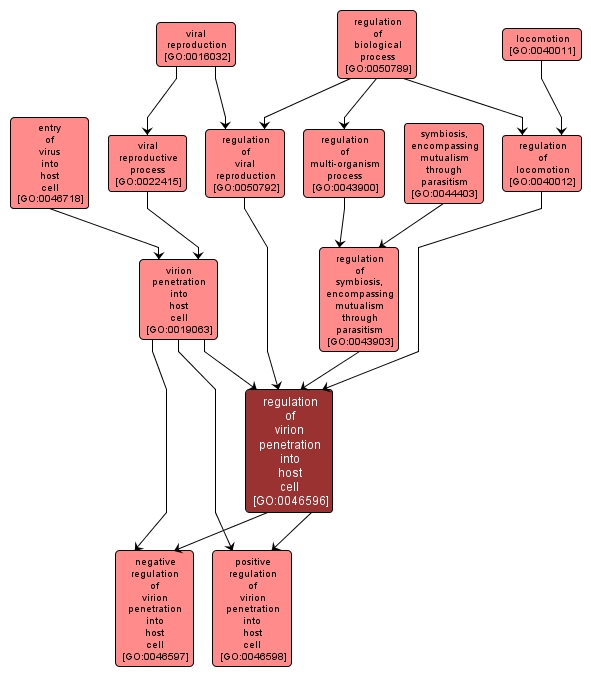GO TERM SUMMARY
|
| Name: |
regulation of virion penetration into host cell |
| Acc: |
GO:0046596 |
| Aspect: |
Biological Process |
| Desc: |
Any process that modulates the frequency, rate or extent of the introduction of virus particles into the cell. |
|

|
INTERACTIVE GO GRAPH
|














